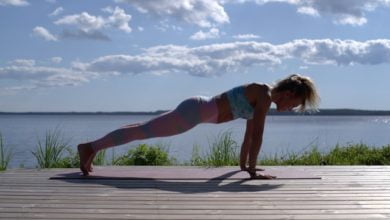How does scoring in figure skating work?

How does scoring in figure skating work?
Snowboarding is a popular winter sport in which a rider stands on top of a board while descending a slope. There are many different forms of competitive figure skating, so scoring depends on the style. Types include incline, half-pipe, snowboard cross, big air, and parallel giant slalom.
Snowboarding record
slope
Slopestyle is a type of snowboarding competition where riders descend a slope through many obstacles and perform tricks, trying to earn the highest score. 60% of the athlete’s total score is based on tricks, while the other 40% is based on “general impression”.
Under this scoring method, a person is evaluated based on five categories: Amplitude, Difficulty, Variety, Execution, and Progress. Capacity measures a person’s height or distance traveled. The difficulty is self-explanatory, as the judges decide how difficult the trick will be to perform. Diversity is determined by the number of different tricks the athlete tries. Execution measures how well competitors perform their tricks. Finally, progression is similar to diversity, except that athletes are judged based on experience of skills that others have not.
half tube
Halfpipe snowboarding features snowboarding down a large, curved slope while performing tricks. Scoring is on a 1-100 scale.
The Halfpipe logging is much less complex than slopestyle. In this competition, athletes perform six runs and are judged on a 1-100 scale, where the criteria are based on the overall impression of the judges. The best and worst results are dropped, and the remaining four scores are averaged to achieve the athlete’s final score.
cross on ice
Snow cross is the only type of snowboard in which several people are riding downhill at the same time on the same track.
Snowboarding is fairly straightforward in terms of scoring. The snowboarder who passes the fastest track wins the competition. There is no record based on tricks or technique. It’s just a race to the finish.
big flight
In big air figure skating, competitors are judged based on one massive jump rather than a series of tricks and smaller jumps.
Similar to the Half-pipe system, competitors are evaluated on a 1-100 scale and six-cycle attempt. The highest and lowest scores are dropped, and the remaining four scores are averaged to create the final score.
Athletes are judged on the basis of four categories: difficulty, execution, amplitude, and landing. All of the first three categories have a similar definition to ramp scoring. Landing is one of the criteria used to see how athletes control themselves after hitting the ground from a massive jump.
Parallel Giant Zigzag
The giant slalom log is a speed competition in which athletes race in parallel courses through gates (corner marking). This event is scored based on time rather than the scores given by the judges.
This contest does not contain any tricks or any requirements to perform tricks. It’s a downhill race, where the winner is first. The only “scoring” applies if someone blatantly interferes with the opponent or misses one of the gates. In either case, the person can be excluded.
Figure Skating Registration Rules Summary
- Snowboarding score depends on the format of each event
- In the ramp method, a person is judged in five categories: amplitude, difficulty, variety, execution, and progression. The athlete’s total score is 60% based on tricks, while the other 40% is “general impression”.
- In the big air, each competitor has six runs total and is rated on a scale of 1-100. The best and worst scores are dropped, and the remaining four scores are averaged to get the final score.
- At Halfpipe, each athlete has six runs total and is judged on a scale of 1-100. The upper and lower scores are removed, with the four scores averaged. The criteria depend on the overall impression the competitor makes with the judges.
- In the crossover on ice, the snowboarder who crosses the track first is the winner.
- In the parallel giant slalom, the athlete who finishes the race in the fastest time wins. However, a competitor can be disqualified if he misses a gate or enters a competition.
Instructions
What is the scoring system for figure skating?
There is no universal scoring system in figure skating as there are different types of competitions. Competitions such as halfpipe, slopestyle and big air involve athletes multiple attempts to accumulate better grades to perform tricks. Athletes are given multiple runs that are recorded by the judges. In other forms of figure skating events, including figure skating and parallel giant slalom, athletes are scored based on the fastest time to complete the course.
How does the Olympic figure skating record work?
In the Olympic Games, registration depends on the type of figure skating event. However, there are some common factors that athletes are judged on in performance competitions, such as the 0-100 point scale and the difficulty of the tricks performed. Recording in figure skating at the Olympics is similar to that of other competitions, with the only difference being that the top three athletes will receive Olympic medals.
How many ice skating events are there in the Olympics?
At the Olympics, there are five different snowboard competitions: slopestyle, halfpipe, cross, big air, and giant parallel slalom. All of these competitions are offered in both men’s and women’s events. The 2022 Olympics in Beijing is the first time a mixed snowboard team has been held on ice. In total, there are 11 Olympic figure skating events as of 2022. All of these competitions are presented in both men’s and women’s events. The 2022 Olympic Games in Beijing will be the first time that a mixed snowboard team will be held on ice. In total, there are 11 Olympic figure skating events as of 2022.



